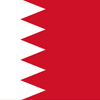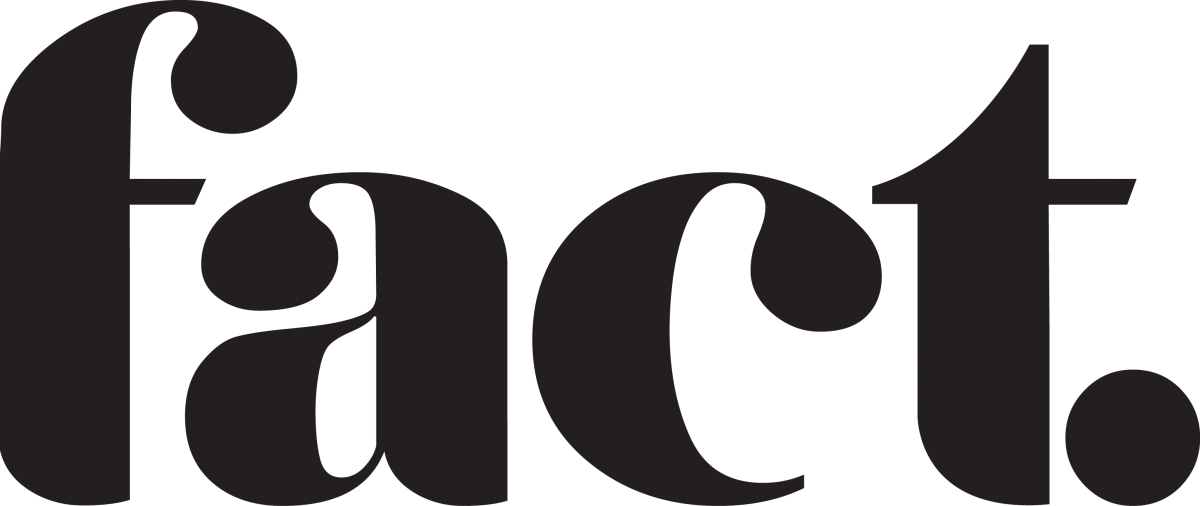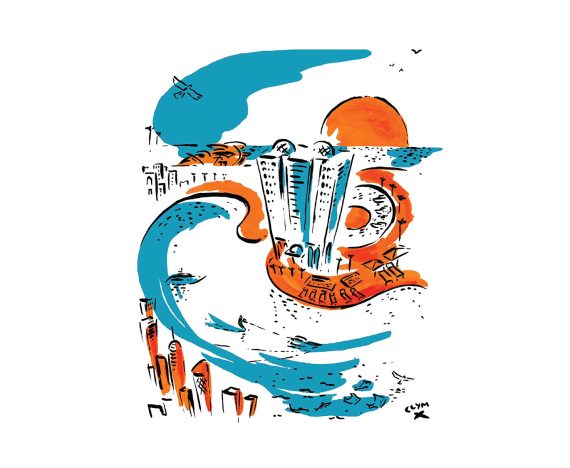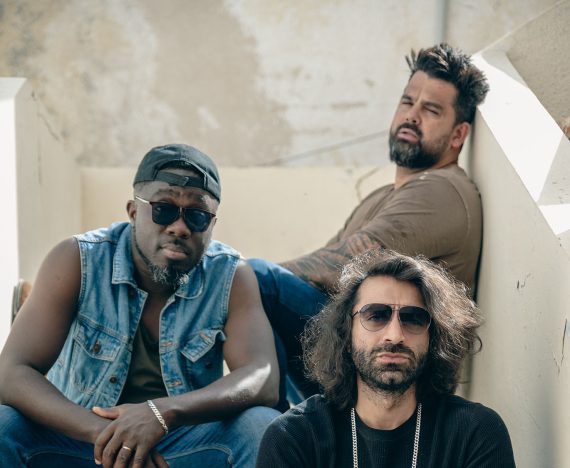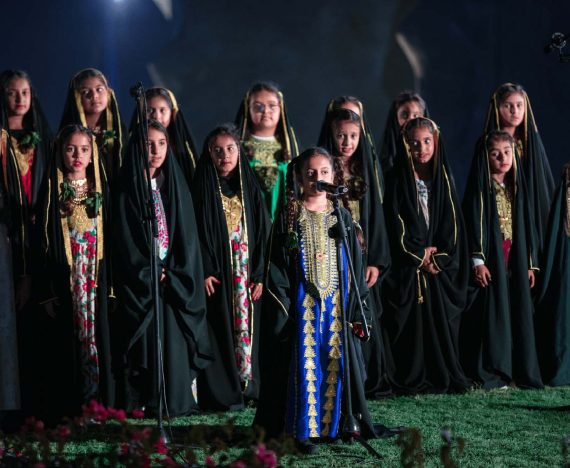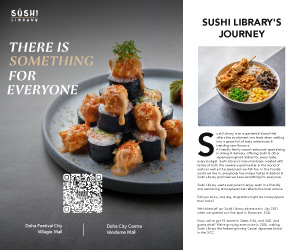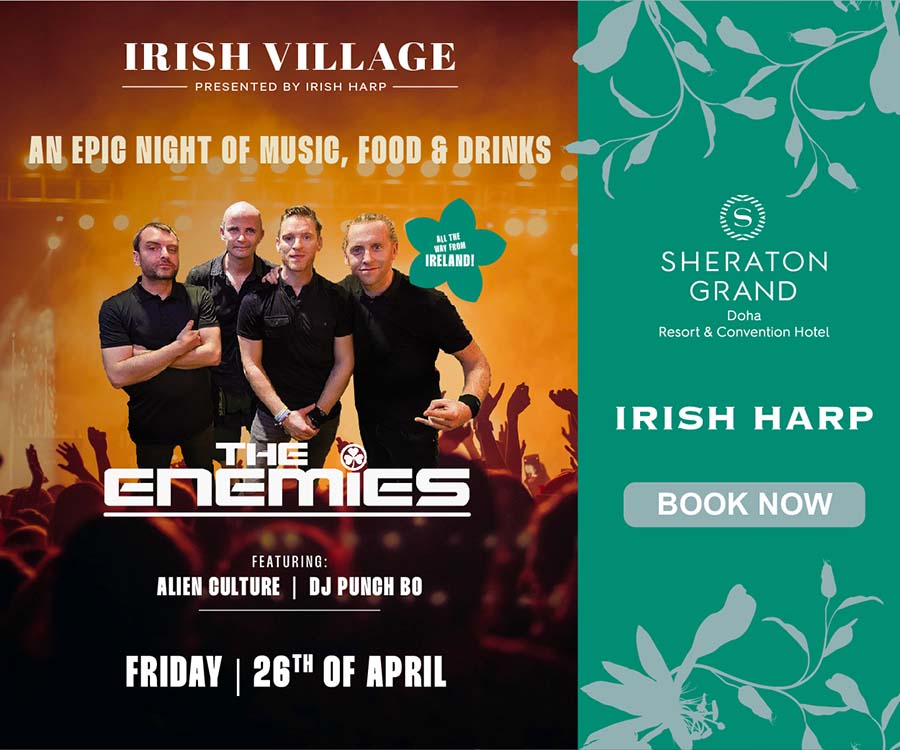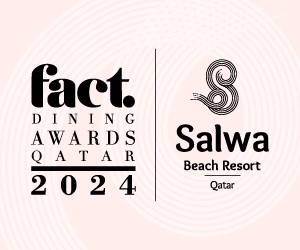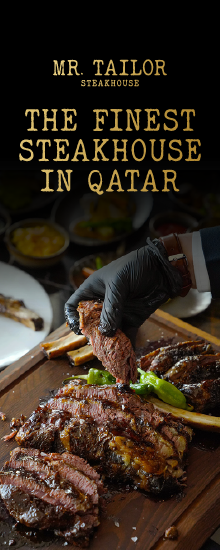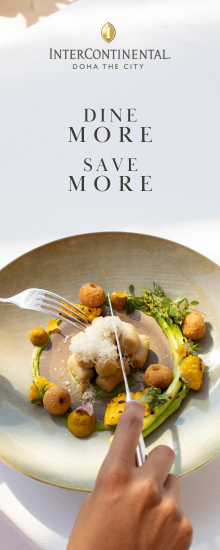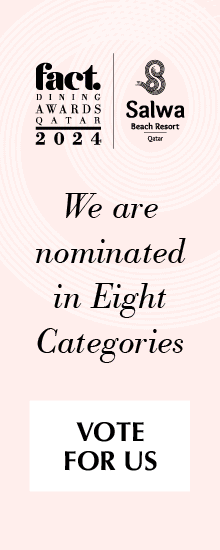CALLIGRAPHY AS A CULTURAL CANVAS
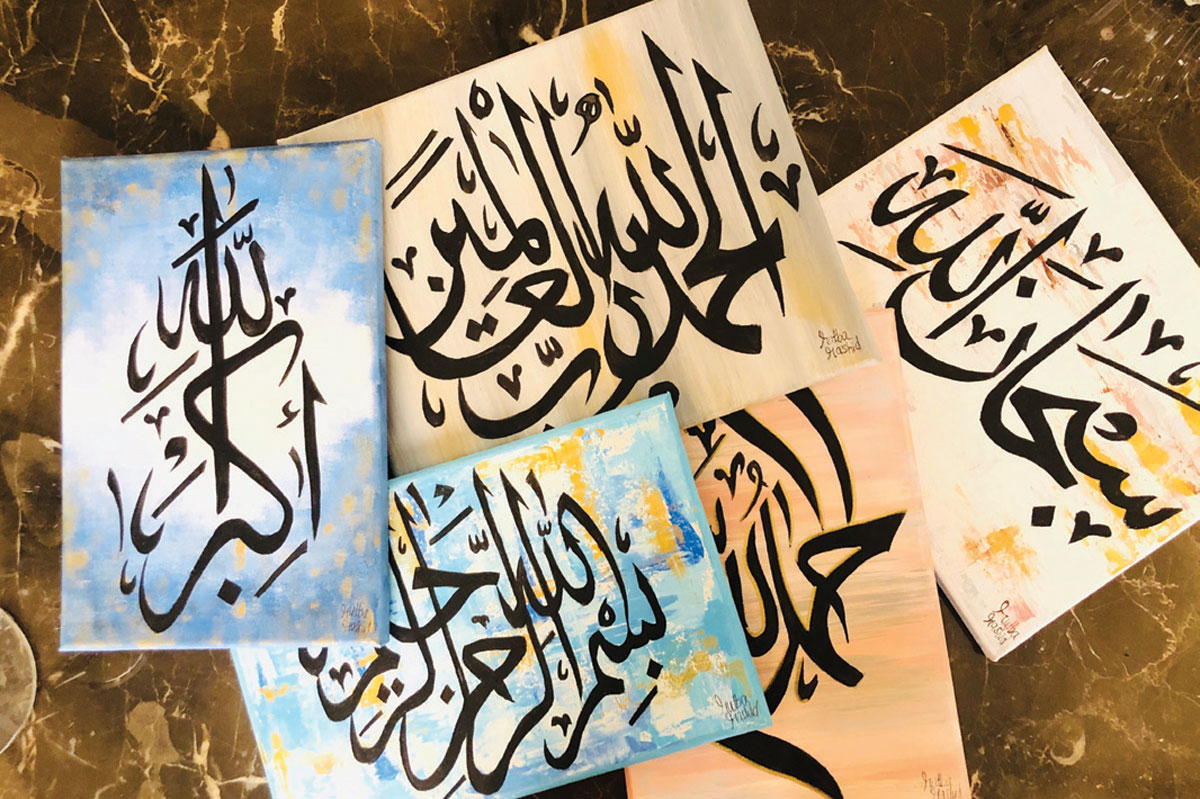
Rutba Rashid – young artist on the rise

Rutba Rashid is a young artist with a creative spirit that embraces Arabic tradition and heritage. The 23-year-old is rapidly becoming renowned for her calligraphy work, which she conveys on large canvasses.
We caught up with this blossoming Arabic artist over lunch where she gave us some unique insights into the development of her artistic style covering some of her influences and inspirations on her journey.
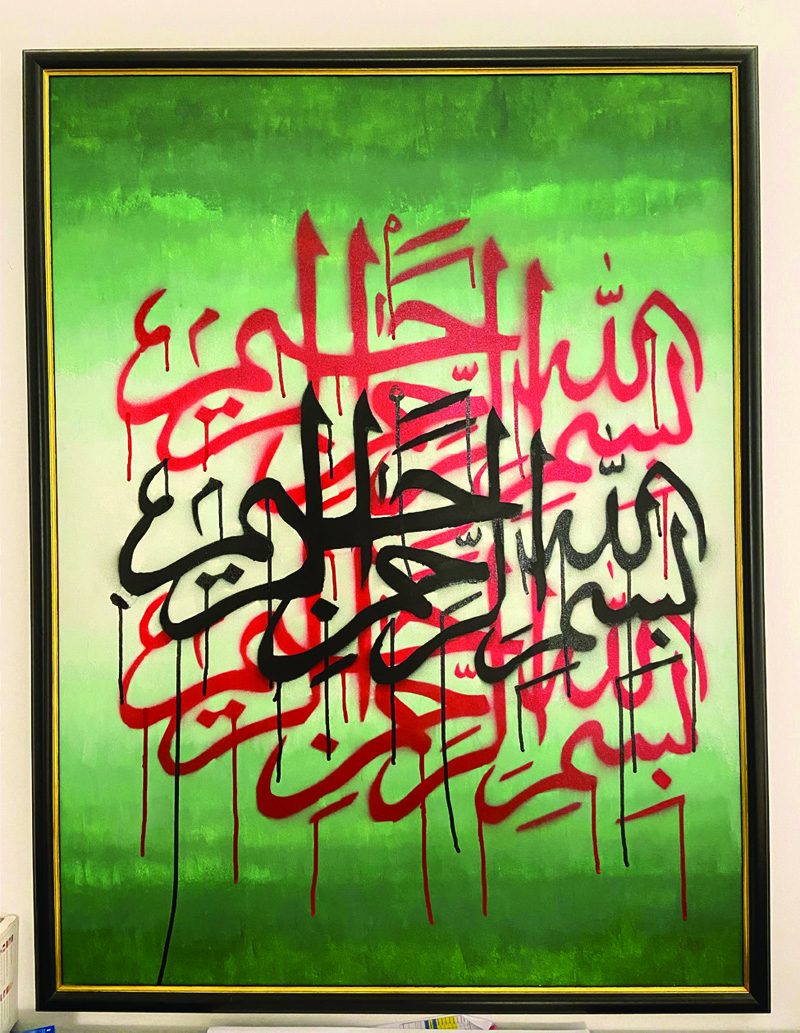
Rutba first developed a more serious interest in art when she moved to high school in 2008. At The International School of London, one of her majors was art which included abstract and fine art and even sculpture. At this stage however, she had yet to encounter the rich beauty of calligraphy.
A visit to India had a profound effect on the artist. Rutba drew considerable inspiration from time spent at the iconic Taj Mahal landmark where she noticed the abundance of calligraphy and the depth of the expression in it. She tells FACT that she was also hugely inspired by the significance of the materials used. “Everything there has meaning, from the marble and stone of the structure to the cleaning materials, even the mud,” she says. Fuller’s earth, also known as Multani Mitti, is applied like a mud face-pack to discoloured portions of the monument. She first began exploring the creative potential in calligraphy after this powerful experience.
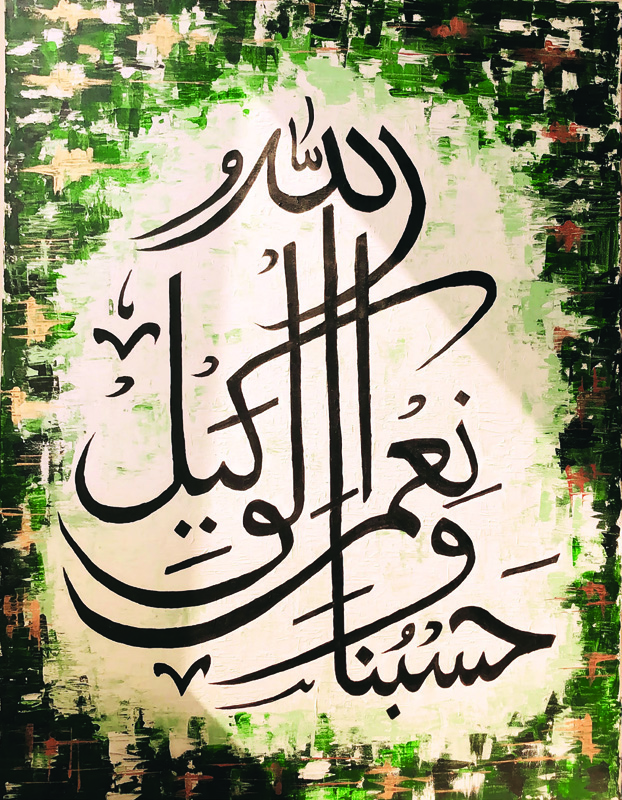
The influences of other artists are also visible in her earlier works. Rutba was inspired by the artist eL Seed, whose abstract calligraphy she calls “beautiful and compelling”. Currently this style of calligraphy doesn’t have a large audience, but Rutba likes the aesthetic disruption of the word order and has explored the creative canvas of the modern abstract approach as a contrast to the traditional work she specialises in. She was further influenced by the elegance of a Swiss calligraphy artist Shéma, who creates abstract textured work in gold and silver. Rutba has produced work directly inspired by her.
After moving to Dubai to attend university, her first customer turned out to be a family member, when her uncle commissioned Rutba to create a painting for his new house. Her work soon got attention and, after launching an Instagram page on the advice of her mum, she started receiving orders from the social media platform. She hasn’t looked back since, selling 40 paintings online.
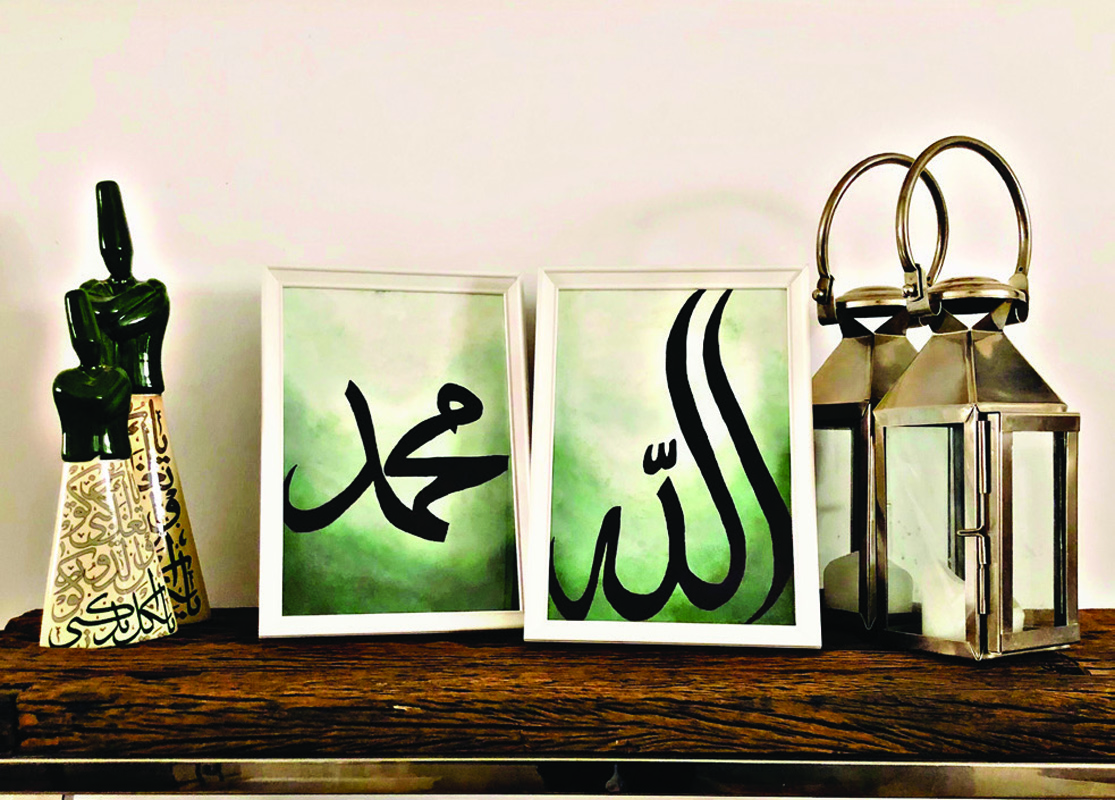
Her audience consists mostly of young millennial art lovers and, in particular, mothers who find meaning in the work she creates. These mums often commission personalised calligraphy artworks to keep in their homes. According to Rutba: “Ninety per cent of my art is based on religious meaning and prayers” and calligraphy pieces like welcoming prayers and blessings are requested most often. Her intricate calligraphy has evolved through intense study and application to her craft, which she feels has helped her improve.
Rutba had also observed on her journey how often Arabic calligraphy is employed in Qatar in hotels and restaurants as a way to organically weave culture into these key tourism touchpoints. It’s a tapestry of tradition that resonates deeply with the artist.

Rutba paints predominantly in oils and acrylics. It’s clear that first-hand cultural experiences influence her work in this medium too. She mentions how Turkish culture inspired her portrayals of whirling dervish dancers in some of her paintings. After a visit to Turkey, she painted several works reflecting this inspiration, incorporating movement and colour rich in heritage and filled with these cross-cultural references. Painted with a knife which lends a specific texture to the work, Rutba’s pieces are possessed of an inherent tactile experience. Audiences can touch the textured surfaces and feel the character of the art.
Rutba shared some more personal insights about her creative process describing how she uses painting as way to deal with pain and sadness or even anger. For example, after her father had surgery, and during his recovery process, she dealt with it through artistic expression. She also explained to us how she sometimes won’t paint for weeks and then suddenly the art flows and results in some of her very best work. For the artist who works hard in the corporate world, her creative mode is centred around the evenings after an intense day of work. Rutba also talks about working outside as a conduit to creativity with sensory inspiration coming from nature and music.

When asked what her next step is as a developing artist, she talks of her ambition to exhibit, in a space like Katara. She also mentions a desire to explore more disruptive types of abstract calligraphy.
A full exhibition of her current work would be the ideal platform to celebrate Rutba’s love affair with Arabic culture and contemporary idioms. We can’t wait for our invitation. ✤

